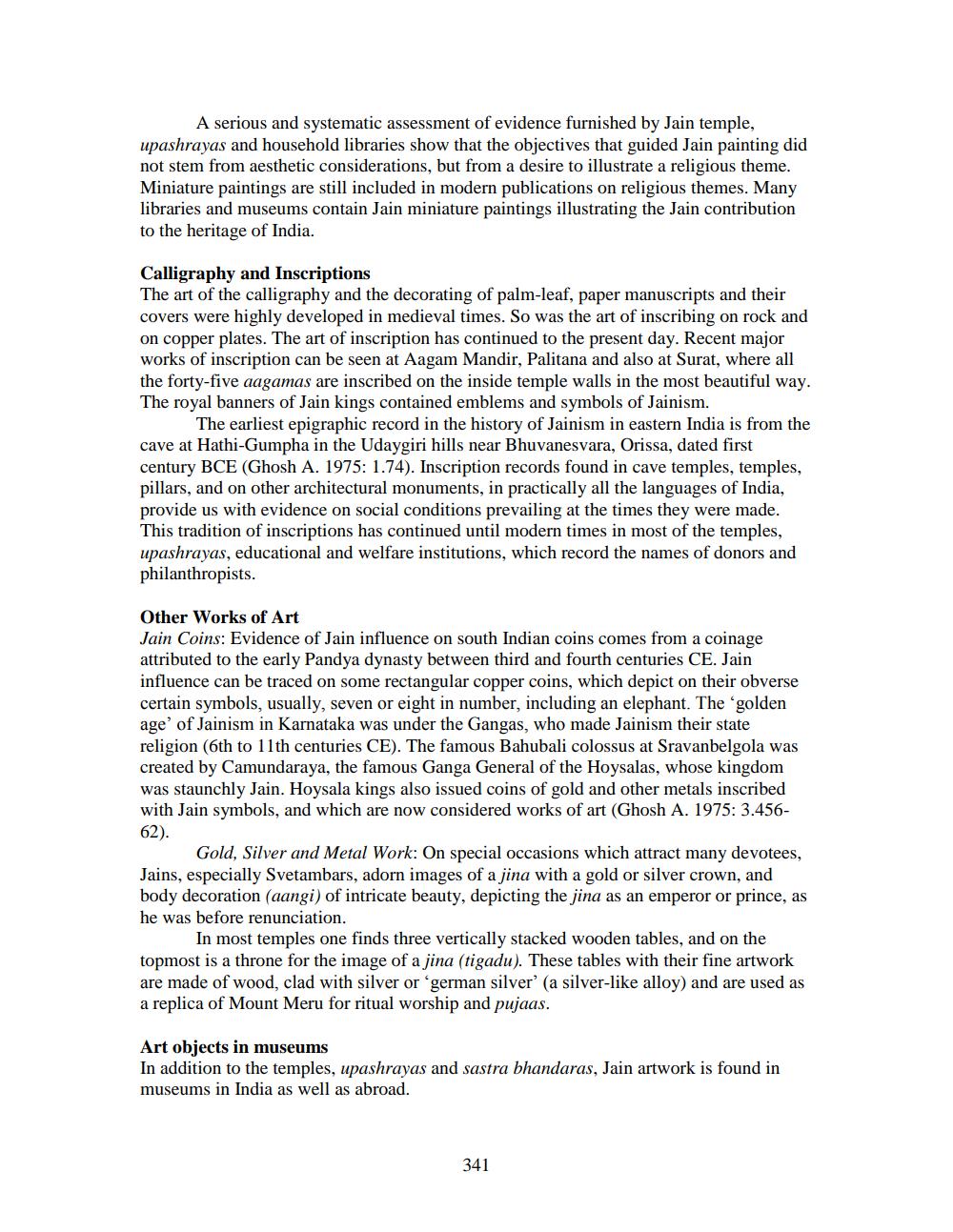________________
A serious and systematic assessment of evidence furnished by Jain temple, upashrayas and household libraries show that the objectives that guided Jain painting did not stem from aesthetic considerations, but from a desire to illustrate a religious theme. Miniature paintings are still included in modern publications on religious themes. Many libraries and museums contain Jain miniature paintings illustrating the Jain contribution to the heritage of India.
Calligraphy and Inscriptions The art of the calligraphy and the decorating of palm-leaf, paper manuscripts and their covers were highly developed in medieval times. So was the art of inscribing on rock and on copper plates. The art of inscription has continued to the present day. Recent major works of inscription can be seen at Aagam Mandir, Palitana and also at Surat, where all the forty-five aagamas are inscribed on the inside temple walls in the most beautiful way. The royal banners of Jain kings contained emblems and symbols of Jainism.
The earliest epigraphic record in the history of Jainism in eastern India is from the cave at Hathi-Gumpha in the Udaygiri hills near Bhuvanesvara, Orissa, dated first century BCE (Ghosh A. 1975: 1.74). Inscription records found in cave temples, temples, pillars, and on other architectural monuments, in practically all the languages of India, provide us with evidence on social conditions prevailing at the times they were made. This tradition of inscriptions has continued until modern times in most of the temples, upashrayas, educational and welfare institutions, which record the names of donors and philanthropists.
Other Works of Art Jain Coins: Evidence of Jain influence on south Indian coins comes from a coinage attributed to the early Pandya dynasty between third and fourth centuries CE. Jain influence can be traced on some rectangular copper coins, which depict on their obverse certain symbols, usually, seven or eight in number, including an elephant. The 'golden age' of Jainism in Karnataka was under the Gangas, who made Jainism their state religion (6th to 11th centuries CE). The famous Bahubali colossus at Sravanbelgola was created by Camundaraya, the famous Ganga General of the Hoysalas, whose kingdom was staunchly Jain. Hoysala kings also issued coins of gold and other metals inscribed with Jain symbols, and which are now considered works of art (Ghosh A. 1975: 3.45662).
Gold, Silver and Metal Work: On special occasions which attract many devotees, Jains, especially Svetambars, adorn images of a jina with a gold or silver crown, and body decoration (aangi) of intricate beauty, depicting the jina as an emperor or prince, as he was before renunciation.
In most temples one finds three vertically stacked wooden tables, and on the topmost is a throne for the image of a jina (tigadu). These tables with their fine artwork are made of wood, clad with silver or 'german silver' (a silver-like alloy) and are used as a replica of Mount Meru for ritual worship and pujaas.
Art objects in museums In addition to the temples, upashrayas and sastra bhandaras, Jain artwork is found in museums in India as well as abroad.
341




